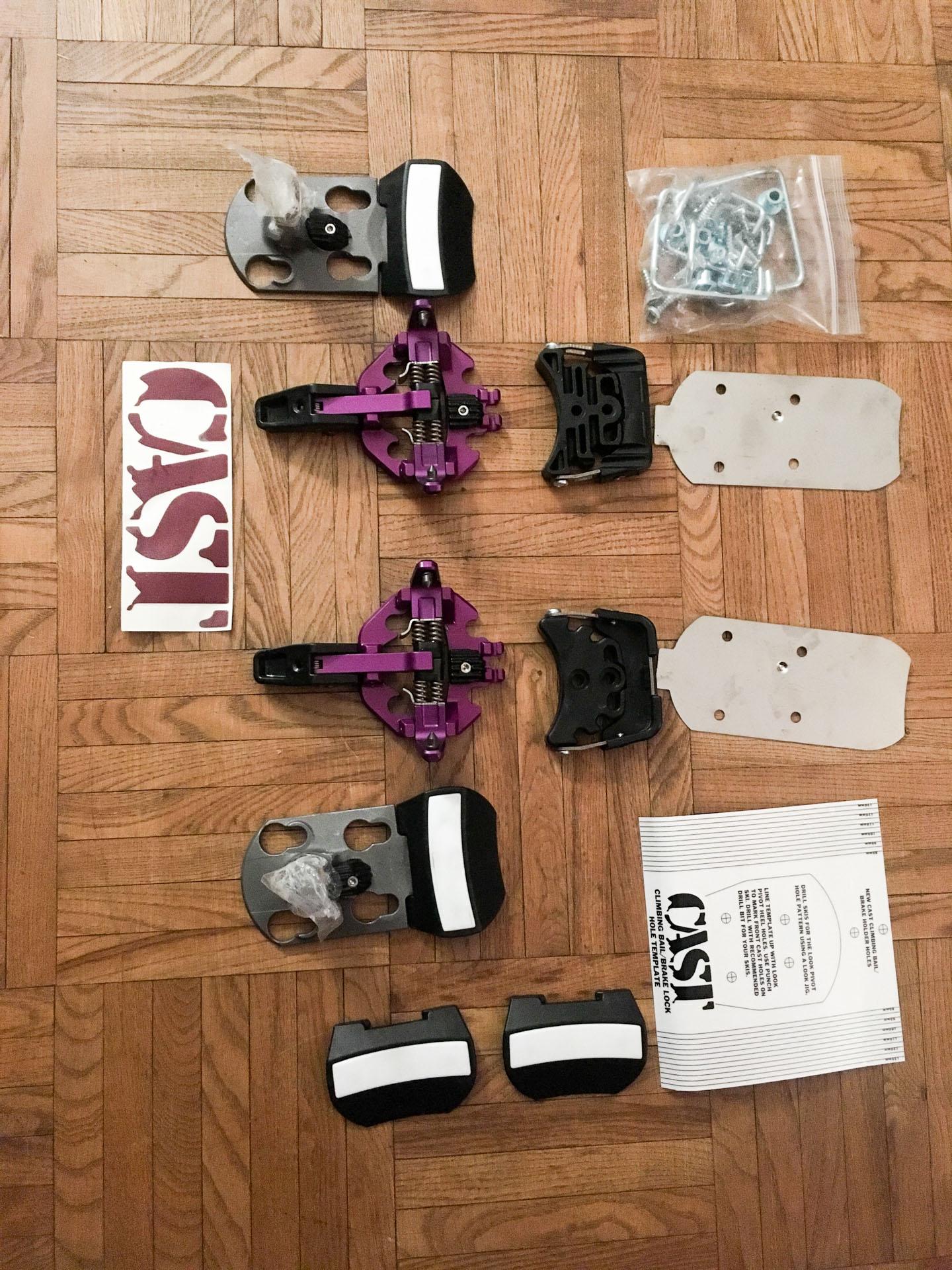Conclusion Basti
The system is a great solution for me. The best thing of all is the feeling when, after an ascent on a touring mountain - when everyone else is very carefully and cautiously getting into their pin bindings and hurrying across the field to the start of a beautiful couloir - you hear a rich clack of the P18 and can rely on the alpine performance on the descent.
In order to utilise this performance, it makes sense to have sporty ski boots with inserts. Many manufacturers now offer such ski boots. CAST itself also offers a conversion to pin inserts for sent-in alpine ski boots.
The additional weight of the system is not a negative factor in the applications described above. It is a gain in freedom for the current freeride equipment. A weight-reduced setup is still recommended for ascent-intensive tours or multi-day hut tours.
The CAST Freetour System is a heavy-duty version of a pin binding and is currently unrivalled in its kind. Competitor products such as the Dynafit Beast or the Salomon Shift make compromises. Other new products such as the B.A.M. Pindung still have to prove themselves.
Conclusion Tobi
For me, the CAST freetour system is the ideal setup on my wide ski area skis - it makes a setup purely with alpine bindings superfluous. I used to use a Kingpin for short tours or approaches to backcountry kickers, but I didn't really want to use just the Kingpin in the ski resort, so I had a second ski with an alpine binding. While the Kingpin worked perfectly in soft snow conditions, I had problems from time to time on hard ground and especially on the often hard and uneven approaches to backcountry kickers.
With the CAST system, this is no longer necessary. The Kingpin is now mounted on another ski that is only intended for more extensive touring. This gives me a huge advantage: I have an uncompromising setup with CAST that doesn't restrict me, especially on the downhill, and as soon as I have skins/front jaws in my rucksack, virtually anything is possible on a day's skiing. I also have another setup for more ascent-heavy activities such as hut tours, but also for days with lots of short ascents and multiple skinning and deskinning. The comfort of the kingpins and shifts is better here, as you can change over more quickly. Since the introduction of the original CAST system a few years ago, as a FKS/Pivot fan I have been very interested in the system. When I finally received it this winter in February, it felt like a second Christmas for me and the feeling still lingers - especially when I suddenly find myself with a top alpine set-up after skinning up.
Advantages & disadvantages
+ Reliable, robust system
+ Best downhill performance
+ Different sole choices (ISO and WTR, GripWalk now also available)
+ 2nd ski set available to equip several skis with the base plates. (In combination with inserts mounted in the skis on the rear jaws, this creates a removable binding that can be used on several skis)
+ Fitting of commercially available crampons
+ 2-fold climbing aid and completely flat setting
+ Assembly possible at home (some skill required)
+ Drilling pattern of the P18
- Total weight compared to other touring bindings and unusual weight distribution due to the rear jaw on the ascent
- Ski boots with inserts necessary
- The loose binding front jaws can theoretically be lost or forgotten
- Additional acquisition costs for alpine binding
- 2 additional drill holes
Details
Price whole system: 675$ (with P18)
Price without P18: 345$
2nd ski set: 100$
Spare parts also available separately.
Weight (according to the website): 2000 grams "touring weight" per pair (without the P18 toe pieces, which are in the backpack)
Here is the link to the CAST website with further information.
PowderGuide was provided with 2 kits free of charge by the manufacturer. You can find out how we test them in our test statement.

























